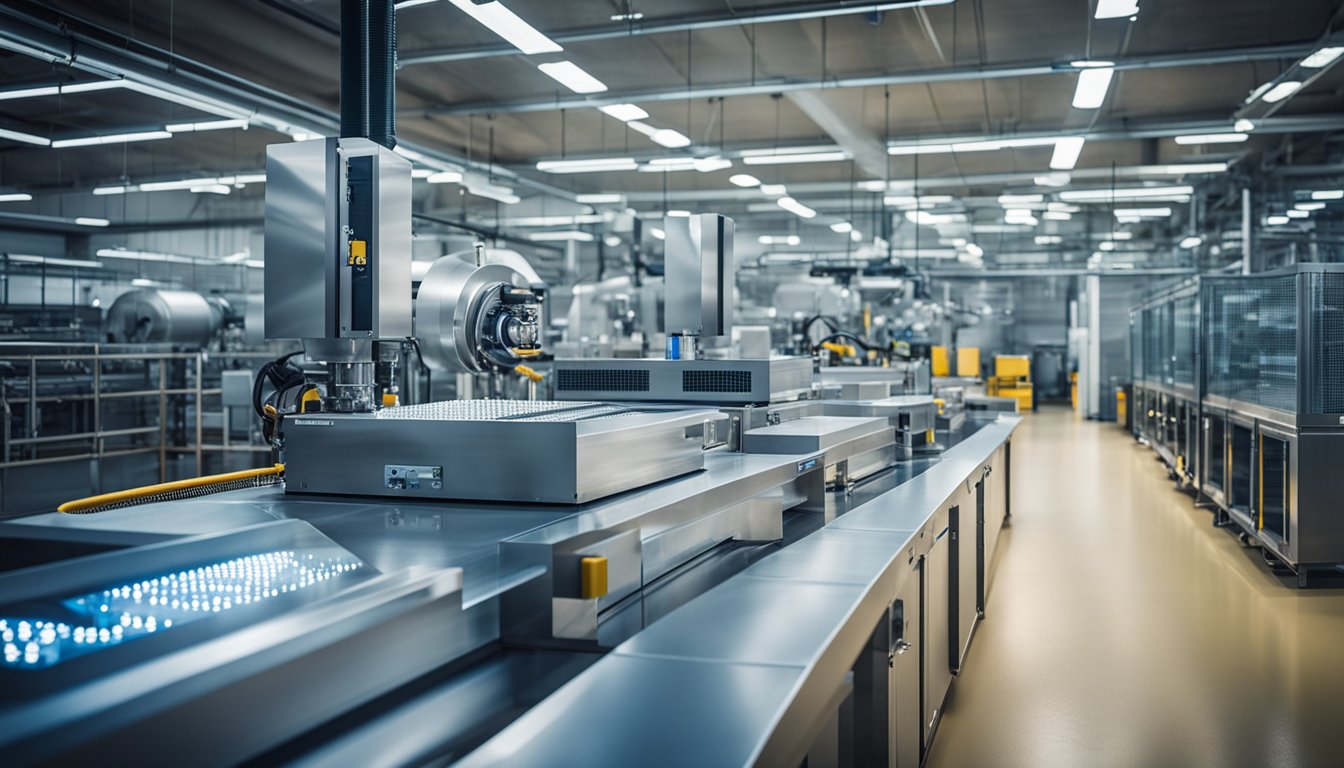Late updated: 20 Feb 2025 10:02
Written by: Eleanor Hartman
Innovative Indoor Thermal Management Solutions: Advancing Energy Efficiency and Comfort
In today’s era of rapid technological advancement, indoor thermal management is playing an increasingly pivotal role in enhancing energy efficiency and comfort. As buildings modernise, they demand innovative solutions to manage and optimise their indoor climates effectively. Our exploration into cutting-edge thermal management systems uncovers key techniques for ensuring both sustainability and comfort in various environments.

Many contemporary systems leverage thermal energy storage to moderate temperatures and reduce energy consumption. This technique is essential for maintaining stable indoor conditions, even during fluctuations in external weather or occupancy levels. Whether in large-scale facilities like data centres or smaller residential buildings, these solutions are transforming how we approach climate control.
By embracing IoT technologies and advanced HVAC solutions, we're revolutionising indoor agriculture and other sectors needing precise climate control. This integration not only enhances operational efficiency but also offers pathways for significant energy conservation, leading the way for future innovations.
Key Takeaways
- Innovative thermal management improves energy efficiency and comfort.
- Thermal energy storage helps maintain stable indoor climates.
- IoT and advanced HVAC solutions enhance operational efficiency.
Principles of Effective Thermal Management

Effective thermal management is crucial in maintaining indoor thermal comfort and enhancing energy efficiency. Key principles revolve around understanding heat transfer, using advanced materials, and ensuring precise temperature control. These aspects significantly contribute to creating sustainable environments.
Core Concepts of Thermal Management
Our primary focus in thermal management is to control and regulate heat flow within indoor spaces. Heat transfer, the movement of thermal energy, remains a central concept. It occurs via conduction, convection, and radiation. By understanding these processes, we can optimise the building envelope to efficiently maintain desired temperature levels.
Innovative solutions involve integrating renewable energy systems and high-performance insulation materials to minimise energy consumption. Our strategies aim for an ideal balance between thermal comfort and energy efficiency, enhancing overall building performance.
Advancements in Material Science
Advancements in material science play a pivotal role in thermal management. Materials with high thermal conductivity and low emissivity are crucial for effective insulation. These materials help reduce unwanted heat gains or losses, ensuring better energy efficiency.
Recent research reveals the potential of phase-change materials (PCMs) that absorb, store, and release thermal energy. By maintaining more stable indoor temperatures, PCMs improve energy efficiency and comfort. We continuously explore innovative materials to refine thermal management solutions.
Importance of Temperature Control
Temperature control is essential for maintaining thermal comfort and improving energy efficiency. Accurately managing indoor temperatures through smart systems and AI technologies leads to better thermal management outcomes. These technologies allow for real-time adjustments and provide insights into energy use patterns.
By implementing intelligent temperature control systems, we ensure that environments remain comfortable while reducing energy consumption. Our commitment is to integrate these solutions effectively, promoting both sustainability and comfort within indoor spaces.
Innovative Systems and Technologies
In our exploration of indoor thermal management, we look at promising technologies across different areas. This includes advanced cooling systems, effective energy storage, and comprehensive building automation solutions, all contributing to improved efficiency and lower costs.
Cutting-edge Cooling Technologies
Cutting-edge cooling technologies are at the forefront of thermal management innovation. These systems leverage advancements like thermoelectric coolers and air handling solutions, crucial for data centres and mission-critical environments. Utilising semiconductor technology, we enhance reliability and efficiency.
Incorporating air 2 o systems also results in substantial energy savings. These technologies offer custom build capabilities tailored to specific cooling needs. Through energy-efficient cooling, we address increased energy demand while achieving cost reduction goals. We prioritise the balance between innovation and operational excellence for optimal performance.
Energy Storage and Conservation
Strategic energy storage and conservation play a vital role in enabling efficient thermal management. Solutions such as innovative thermal energy storage support grid-responsive methods. This reduces energy usage during peak times, providing stability and cost-efficiency for buildings.
Our approaches are designed considering the architectural context and are informed by industry standards and research. Through this, we can effectively store and release energy as needed, enhancing reliability. Supporting conservation efforts also limits operating costs and fosters sustainable practices. Efficient and resilient energy storage is instrumental in our energy conservation strategies.
Building Automation and Control Systems
Building automation and control systems are crucial for optimising thermal management. These smart systems facilitate precise control over the indoor environment. By employing advanced sensors and smart technology, we maintain optimal conditions across different settings.
Integration of building energy management systems allows us to track and adjust energy consumption proactively. This approach ensures responsive problem-solving, maximising energy efficiency and minimising waste. Utilising building automation reduces environmental impact, aligns with cost-reduction strategies, and meets occupant comfort expectations. Technology-enabled solutions are key to modern thermal management success.
Frequently Asked Questions

Our comprehensive insight into innovative indoor thermal management solutions answers some fundamental queries surrounding HVAC systems, energy efficiency, and technological advancements. This provides a solid understanding for anyone looking to enhance their indoor climate control systems.
What are the most effective ways to regulate temperature in large commercial buildings?
For large commercial properties, employing advanced thermal management techniques is crucial. Zone-based HVAC systems that target specific areas are particularly effective. Integrating Phase Change Materials (PCMs) can further enhance efficiency by absorbing and releasing heat, offering stable temperature control.
How can I improve energy efficiency in my home's heating and cooling systems?
Energy efficiency in residential environments can be optimised through regular system maintenance and upgrades. Utilising programmable or smart thermostats can adjust temperatures automatically. Incorporating passive cooling strategies such as improved insulation and strategic window shading complements these technologies to reduce energy consumption.
What are the latest advancements in HVAC technology for residential use?
Recent advancements focus on smart technologies and energy-saving innovations. For instance, systems now integrate AI to optimise operation times. Variable speed systems provide more precise temperature control, thereby reducing wear and energy usage.
Can smart thermostats significantly reduce energy consumption for indoor climate control?
Smart thermostats can indeed lead to notable energy savings. By learning user habits and adjusting settings accordingly, these devices optimise heating and cooling, ensuring temperatures are not excessively high or low when buildings are unoccupied. Long-term use can result in reduced utility bills.
What should be considered when selecting an HVAC system for harsh climates?
In harsh climates, durability and efficiency are paramount. Selecting systems with advanced dehumidification features and robust build quality can withstand extreme conditions. Considering local environmental factors and energy costs ensures optimal performance and reduced long-term expenses.
How does the integration of renewable energy sources impact HVAC system design?
Incorporating renewable energy, such as solar power, into HVAC system designs facilitates reduced carbon footprints and energy costs. HVAC systems tailored for renewable integration often include solar-compatible heat pumps and storage solutions, which can supply consistent energy while functioning sustainably.